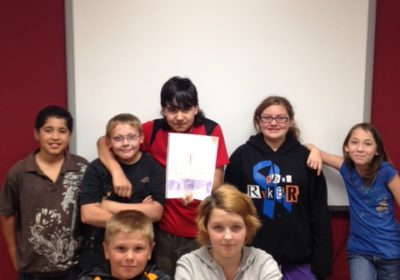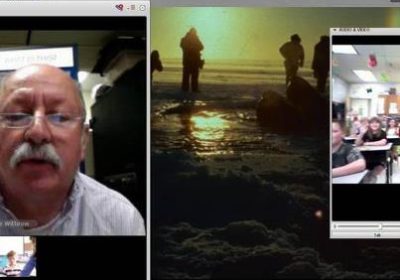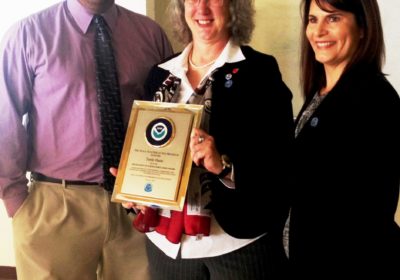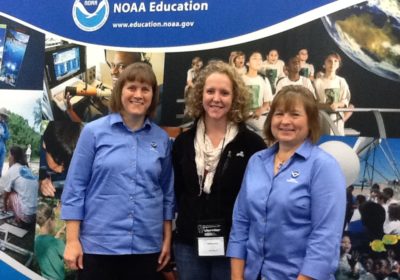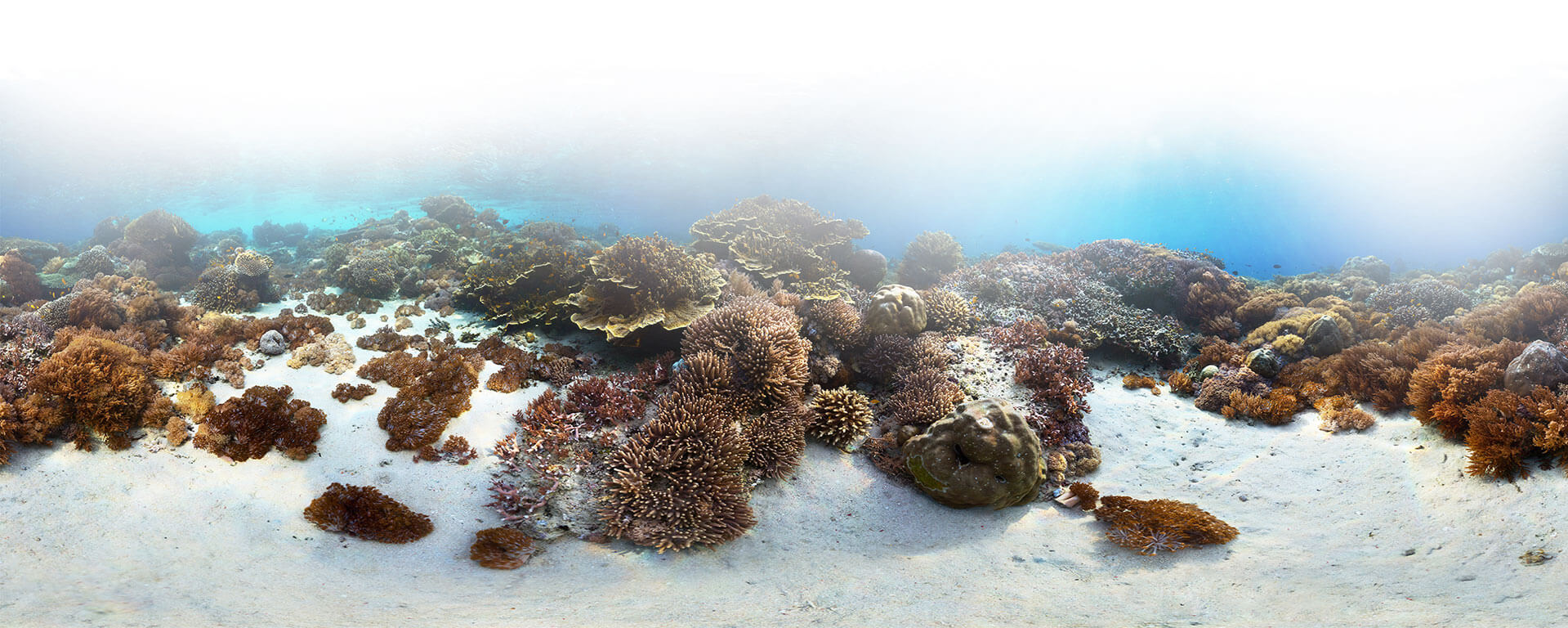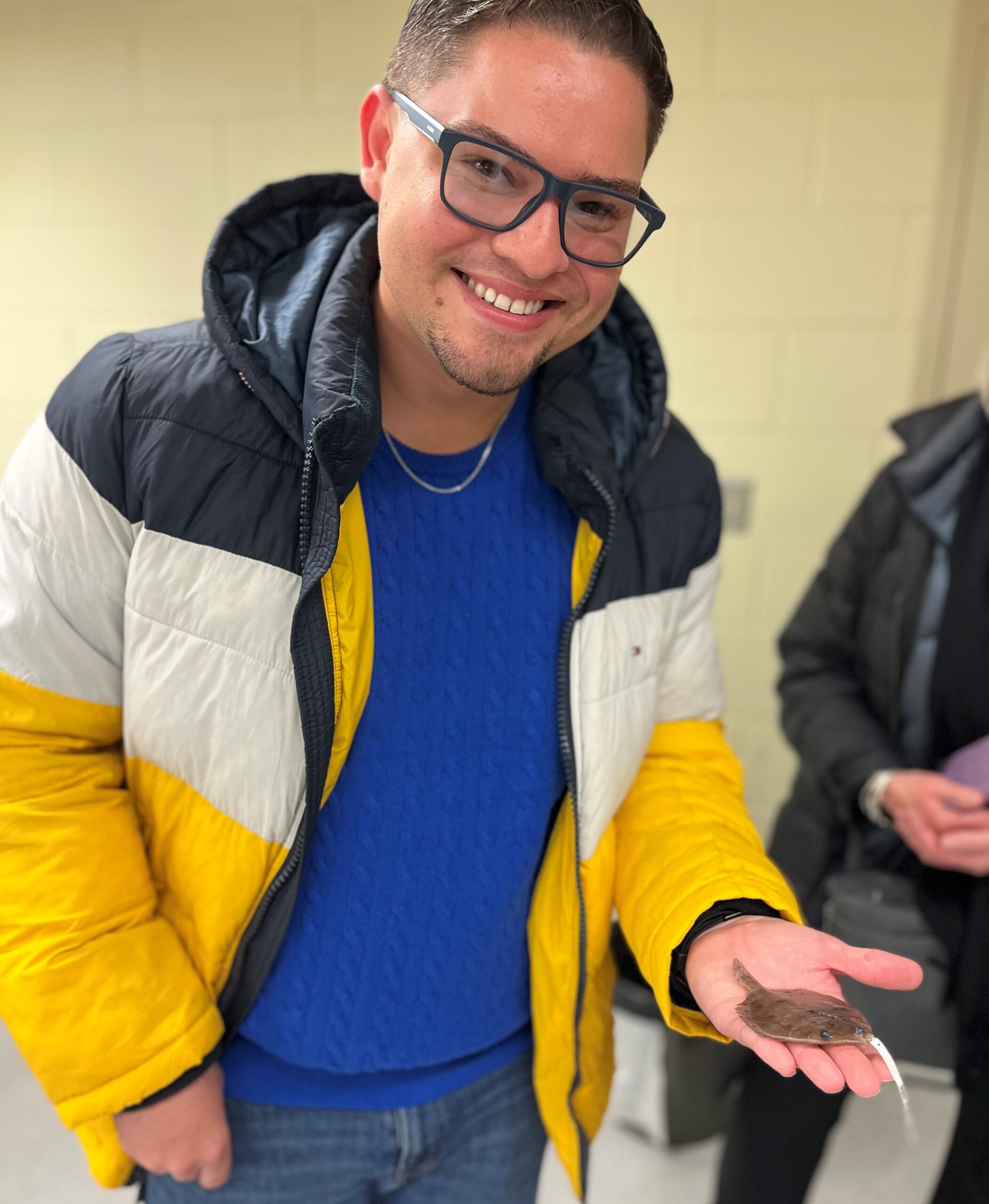
From Puerto Rico to the Pacific: Michael Gutiérrez’s Journey with NOAA Continues
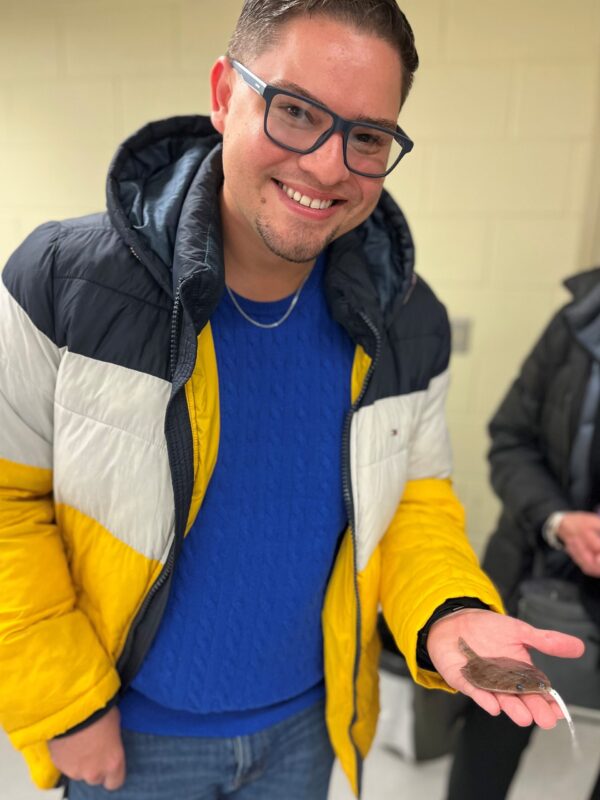
In 2022, Michael Gutiérrez sailed with the NOAA Teacher at Sea (TAS) program on a Pacific Hake survey on NOAA Ship Bell M. Shimada off the Washington and Oregon coasts. As a 12th grade Environmental Science teacher from Puerto Rico, Michael was the first Teacher at Sea to write his entire blog posts in both English and Spanish to better reach his students and community back home. Here you can read how he started his adventure in both English and Spanish.
Since his TAS experience, Michael also partnered with NOAA Ocean Exploration, where he has continued supporting ocean education in both English and Spanish! Michael first partnered with NOAA Ocean Exploration in the fall of 2022, helping to co-host an outreach event at the EcoExploratorio: Museo de Ciencias de Puerto Rico. During the event, Michael helped present ocean exploration activities in Spanish and answered audience questions about his TAS experience and his educational and career path to get there.
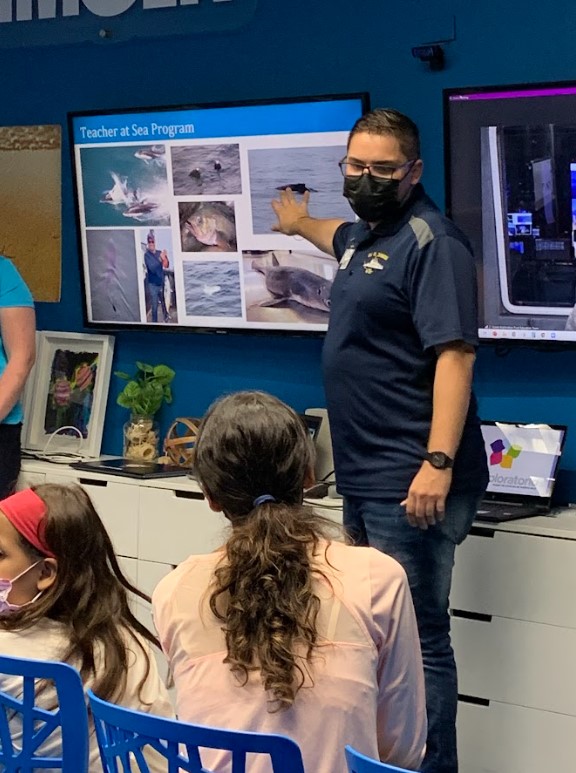
Michael continued to stay engaged with the Ocean Exploration team over the next year, before joining the NOAA Ocean Exploration team as a professional development workshop facilitator. He has attended two Facilitator trainings over the past two years, where the team of 6-7 workshop facilitators are trained on NOAA Ocean Exploration lessons and how to lead them as part of the Exploring the Deep Ocean with NOAA and Life Beyond Light: Chemosynthetic Communities of the Deep Ocean teacher professional development workshops across the country. Since his first training in 2024, Michael has helped facilitate all workshops at the EcoExploratorio in Puerto Rico offered each fall and spring, and traveled to Atlanta to facilitate the Exploring the Deep Ocean with NOAA. While in Atlanta, he also took the opportunity to introduce all 22 workshop participants to the NOAA Teacher at Sea program, noting “The response was very positive; it seems that presenting in person really piques their interest.”
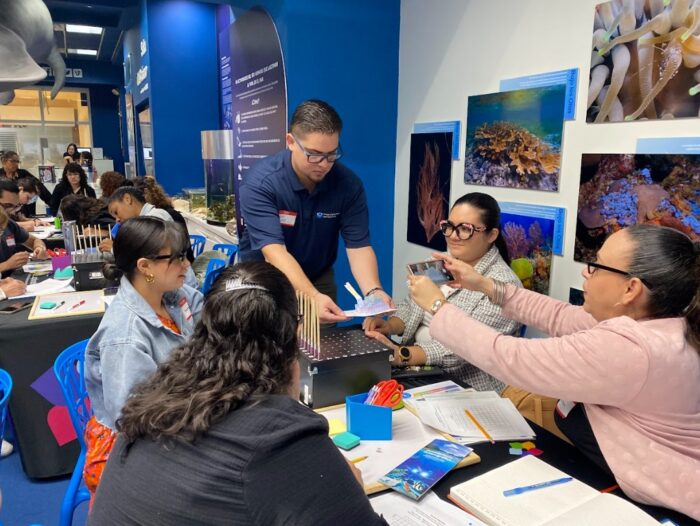
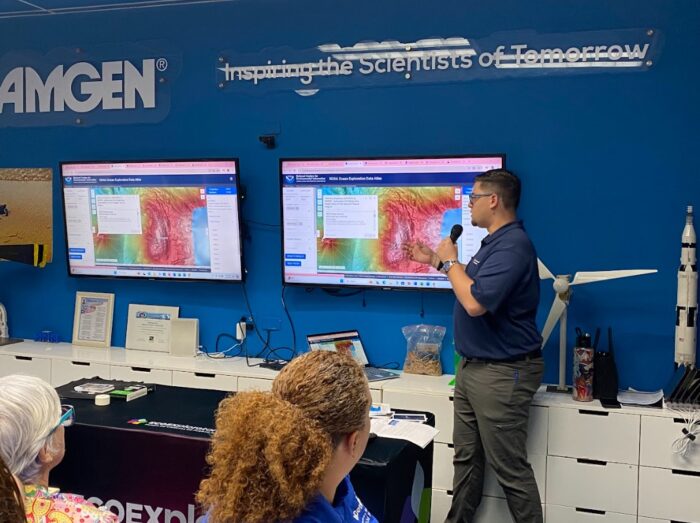
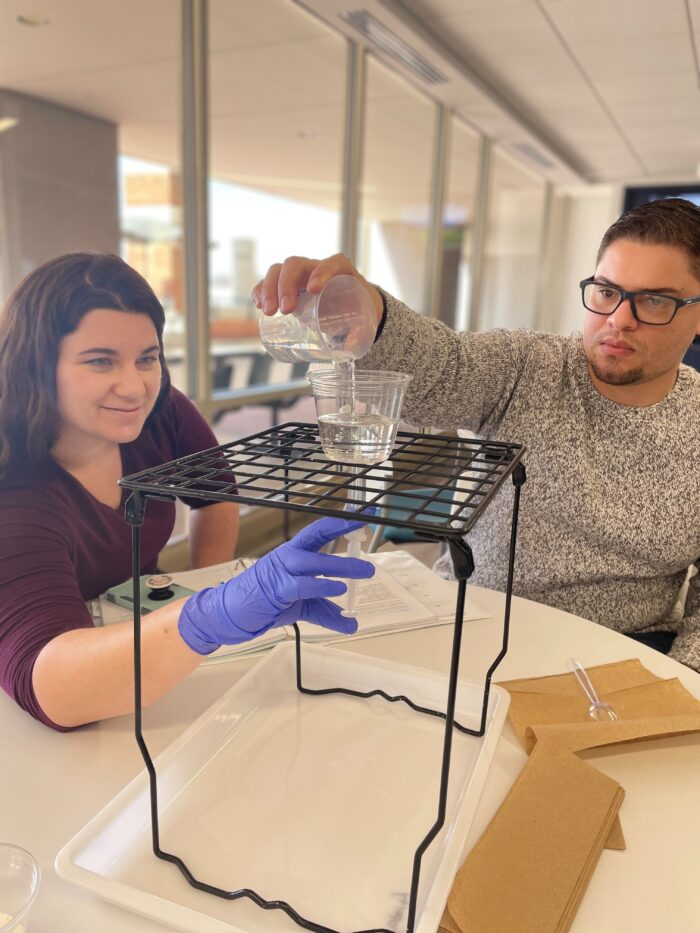
Michael and fellow TAS alumna Denise Harrington (TAS, ’16) have also been instrumental in helping the NOAA Ocean Exploration education team expand their collection of educational materials to include resources in Spanish. As of March 2025, all ocean exploration fact sheets and four lessons are available in Spanish. All materials are also available on the Deep Ocean Education Project website, where educators can create a free account and save any ocean exploration education materials on the site into collections for quick access later. Michael even helped the team to translate the Exploring the Deep Ocean with NOAA teacher workshop into Spanish and piloted the newly translated workshop in March 2025.
In addition to helping translate materials and facilitating teacher workshops, in 2025 Michael also became an Ocean Exploration Education Ambassador for the National Marine Sanctuary Foundation where he shares the importance of ocean exploration and helps get the word out about the educational materials available to bring these topics alive in the classroom in additional science educator events. Most recently, Michael presented “How Do Hydrothermal Vent Chimneys Form: A Student Sensemaking Approach” and participated in the National Marine Educators Association Share-a-Thon poster session at the National Science Teaching Association (NSTA) in Philadelphia in late March 2025.
Michael is a great example of how Teacher at Sea alumni bridge the “at sea” experience and further engage with NOAA staff and resources, continuing to support their local students and other teachers.
In 2025, the Teacher at Sea Program celebrates its 35th season by focusing on its theme–Beyond the Horizon: 35 Years of Science, Education, and Inspiration–and highlighting the exceptional work that teachers like Michael bring to their communities in support of NOAA’s mission.
(Photo Credits: NOAA)

